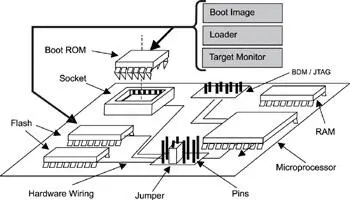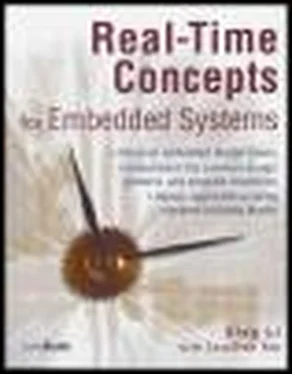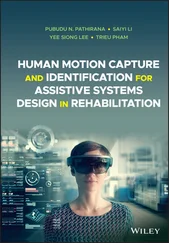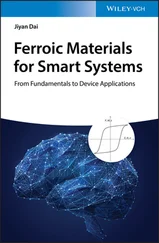Booting the target system, whether a third-party evaluation board or a custom design, can be a mystery to many newcomers. Indeed, it is daunting to pick up a programmer’s reference manual for the target board and pore over tables of memory addresses and registers or to review the hardware component interconnection diagrams, wondering what it all means, what to do with the information (some of which makes little sense), and how to relate the information to running an image on the target system.
Questions to resolve at this stage are
· how to load the image onto the target system,
· where in memory to load the image,
· how to initiate program execution, and
· how the program produces recognizable output.
We answer these questions in this chapter and hopefully reduce frustration by demystifying the booting and initialization process of embedded systems.
Chapter 2 discusses constructing an executable image with multiple program sections according to the target system memory layout. After the final image is successfully built and residing on the host system, the next step is to execute it on the target.
The focus of this chapter is
· image transfer from the host to the target system,
· the embedded monitor and debug agent,
· the target system loader,
· the embedded system booting process,
· various initialization procedures, and
· an introduction to BDM and JTAG interfaces.
3.2 Target System Tools and Image Transfer
An executable image built for a target embedded system can be transferred from the host development system onto the target, which is called loading the image , by:
· Programming the entire image into the EEPROM or flash memory.
· Downloading the image over either a serial (typically RS-232) or network connection. This process requires the presence of a data transfer utility program on the host system, as well as the presence of a target loader, an embedded monitor, or a target debug agent on the target system.
· Downloading the image through either a JTAG or BDM interface (discussed in section 3.5).
These approaches are the most common, and this list is by no means comprehensive. Some of the possible host-to-target connectivity solutions are shown in Figure 2.1. Figure 3.1 exemplifies a target embedded system. We refer to the ELF image format (introduced in Chapter 2) exclusively throughout this chapter.

Figure 3.1: View of the target embedded system.
The embedded software for the final product is commonly stored in either ROM or the flash memory. The entire executable image is burned into the ROM or flash memory using special equipment. If ROM is used, the ROM chip is set into its socket on the target board. For embedded system boards that have both ROM and flash memory, the next step is to set the necessary jumpers. Jumpers are the part of the target board's wiring that controls which memory chip the processor uses to start executing its first set of instructions upon reboot. For example, if the image is stored in the flash memory and the jumpers are set to use the flash memory, the processor fetches its first instruction from the starting address where the flash is mapped. Therefore, set the jumpers appropriately according to the image storage.
This final production method, however, is impractical during the development stage because developers construct software in incremental steps with high frequency. The process is interactive in that a portion of the code is written, debugged, and tested, and the entire process then repeats for the new code. Reprogramming the EEPROM or the flash memory each time the code changes due to bugs or code addition is time consuming. The methods for downloading the image over a serial or a network connection or for downloading the image through a JTAG or BDM interface solve this problem by transferring the image directly into the target system's RAM memory.
A common approach taken at the early development phase is to write a loader program for the target side, which is called the loader , and use the loader to download the image from the host system. In the scenario shown in Figure 3.1, the loader has a small memory footprint, so it typically can be programmed into a ROM chip. A data transfer utility resides on the host system side. The loader works in conjunction with its host utility counterpart to perform the image transfer.
After the loader is written, it is programmed into the ROM. Part of the same ROM chip is occupied by the boot image. At a minimum, this boot image (typically written by a hardware engineer) consists of the code that executes on system power up. This code initializes the target hardware, such as the memory system and the physical RAM, into a known state. In other words, the boot image prepares the system to execute the loader. The loader begins execution after this boot image completes the necessary initialization work.
For this transfer method to work, a data transfer protocol, as well as the communication parameters, must be agreed upon between the host utility and the target loader. The data transfer protocol refers to the transfer rules. For example, a transfer protocol might be that the image transfer request should be initiated from the loader to the host utility; in which case, the host utility sends out the image file size followed by the actual image, and the loader sends an acknowledgement to the host utility upon completion. Data transfer rate, such as the baud rate for the serial connection, and per packet size are examples of communication parameters. The loader and the utility program operate as a unit, which is often capable of using more than one type of connection. At a minimum, the transfer takes place over the serial connection. More sophisticated loaders can download images over the network, for example, over the Ethernet using protocols such as the Trivial File Transfer Protocol (TFTP) or the File Transfer Protocol (FTP). In this case, the host utility program is either the TFTP server or the FTP server respectively.
Both proprietary and well-known transfer protocols can be applied in either the serial or the network connection, but more commonly proprietary protocols are used with a serial connection.
The loader downloads the image directly into the RAM memory. The loader needs to understand the object file format (for example, the ELF format) because, as discussed in Chapter 2, the object file contains information such as the load address, which the loader uses for section placement.
The loader transfers control to the downloaded image after the transfer completes. A loader with flash programming capability can also transfer the image into the flash memory. In that case, the board jumpers must be set appropriately so that the processor executes out of flash memory after the image download completes.
A loader can be part of the final application program, and it can perform other functions in addition to downloading images, as discussed in more detail later in this chapter.
An alternative to the boot image plus loader approach is to use an embedded monitor. A monitor is an embedded software application commonly provided by the target system manufacturer for its evaluation boards. The monitor enables developers to examine and debug the target system at run time. Similar to the boot image, the monitor is executed on power up and performs system initialization such as
· initializing the required peripheral devices, for example, the serial interface and the system timer chip for memory refresh, at a minimum,
Читать дальше













